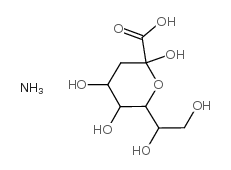Isolation and mutagenesis of a capsule-like complex (CLC) from Francisella tularensis, and contribution of the CLC to F. tularensis virulence in mice.
Aloka B Bandara, Anna E Champion, Xiaoshan Wang, Gretchen Berg, Michael A Apicella, Molly McLendon, Parastoo Azadi, D Scott Snyder, Thomas J Inzana
Index: PLoS ONE 6 , e19003, (2011)
Full Text: HTML
Abstract
Francisella tularensis is a category-A select agent and is responsible for tularemia in humans and animals. The surface components of F. tularensis that contribute to virulence are not well characterized. An electron-dense capsule has been postulated to be present around F. tularensis based primarily on electron microscopy, but this specific antigen has not been isolated or characterized.A capsule-like complex (CLC) was effectively extracted from the cell surface of an F. tularensis live vaccine strain (LVS) lacking O-antigen with 0.5% phenol after 10 passages in defined medium broth and growth on defined medium agar for 5 days at 32°C in 7% CO₂. The large molecular size CLC was extracted by enzyme digestion, ethanol precipitation, and ultracentrifugation, and consisted of glucose, galactose, mannose, and Proteinase K-resistant protein. Quantitative reverse transcriptase PCR showed that expression of genes in a putative polysaccharide locus in the LVS genome (FTL_1432 through FTL_1421) was upregulated when CLC expression was enhanced. Open reading frames FTL_1423 and FLT_1422, which have homology to genes encoding for glycosyl transferases, were deleted by allelic exchange, and the resulting mutant after passage in broth (LVSΔ1423/1422_P10) lacked most or all of the CLC, as determined by electron microscopy, and CLC isolation and analysis. Complementation of LVSΔ1423/1422 and subsequent passage in broth restored CLC expression. LVSΔ1423/1422_P10 was attenuated in BALB/c mice inoculated intranasally (IN) and intraperitoneally with greater than 80 times and 270 times the LVS LD₅₀, respectively. Following immunization, mice challenged IN with over 700 times the LD₅₀ of LVS remained healthy and asymptomatic.Our results indicated that the CLC may be a glycoprotein, FTL_1422 and -FTL_1423 were involved in CLC biosynthesis, the CLC contributed to the virulence of F. tularensis LVS, and a CLC-deficient mutant of LVS can protect mice against challenge with the parent strain.
Related Compounds
| Structure | Name/CAS No. | Molecular Formula | Articles |
|---|---|---|---|
 |
3-Deoxy-D-manno-2-octulosonic acid ammonium salt
CAS:103404-70-2 |
C8H17NO8 |
|
Use of Commercial Dry Yeast Products Rich in Mannoproteins f...
2015-06-17 [J. Agric. Food Chem. 63 , 5670-81, (2015)] |
|
Comparative analysis of lipopolysaccharides of pathogenic an...
2015-01-01 [BMC Microbiol. 15 , 244, (2015)] |
|
Isolation and characterization of the outer membrane of Esch...
2015-03-01 [Biochim. Biophys. Acta 1848(3) , 842-7, (2015)] |
|
The Kdo biosynthetic pathway toward OM biogenesis as target ...
2009-03-01 [Curr. Drug Discov. Technol. 6 , 19-33, (2009)] |
|
Sialyl residues modulate LPS-mediated signaling through the ...
2012-01-01 [PLoS ONE 7 , e32359, (2012)] |